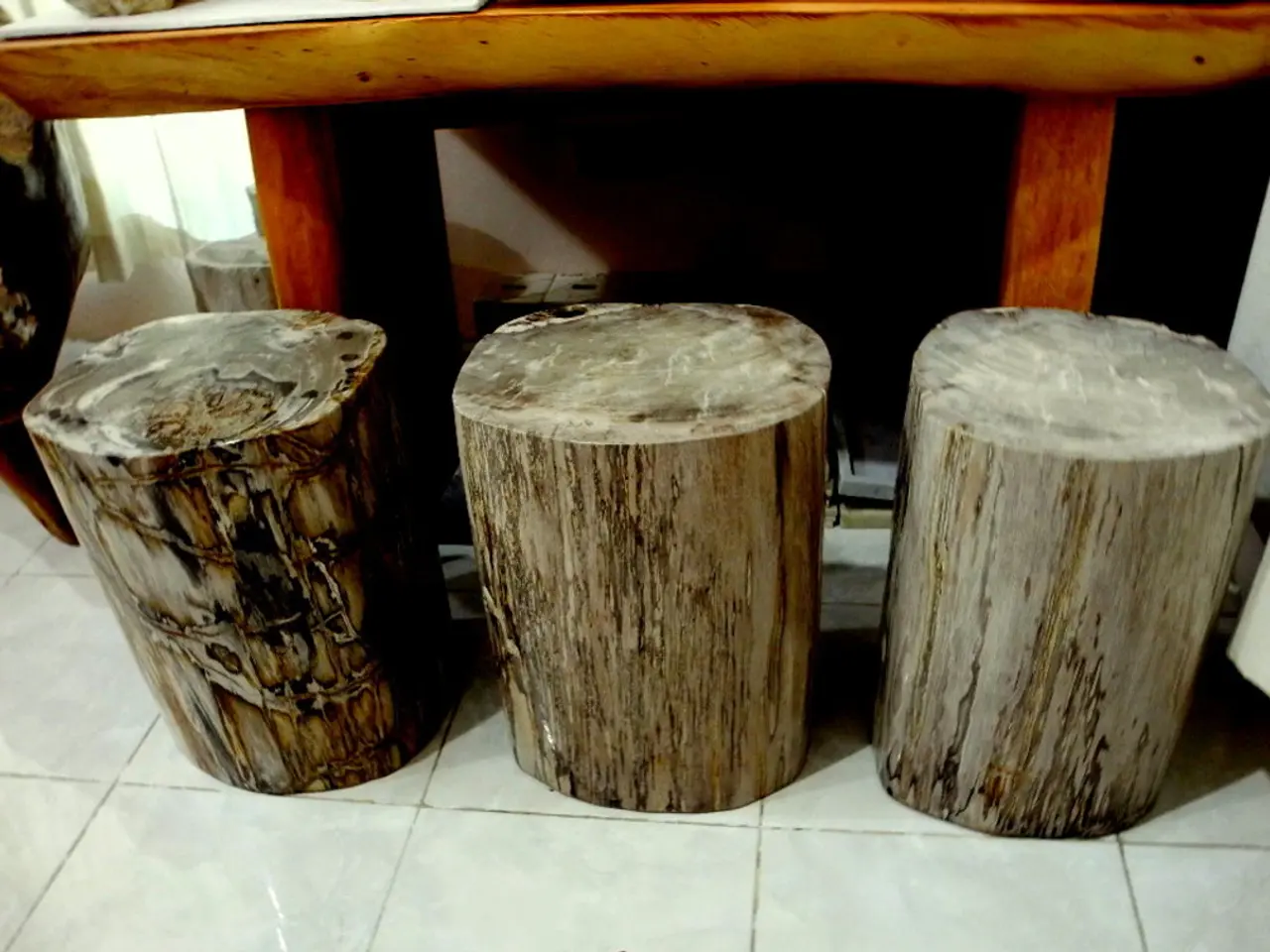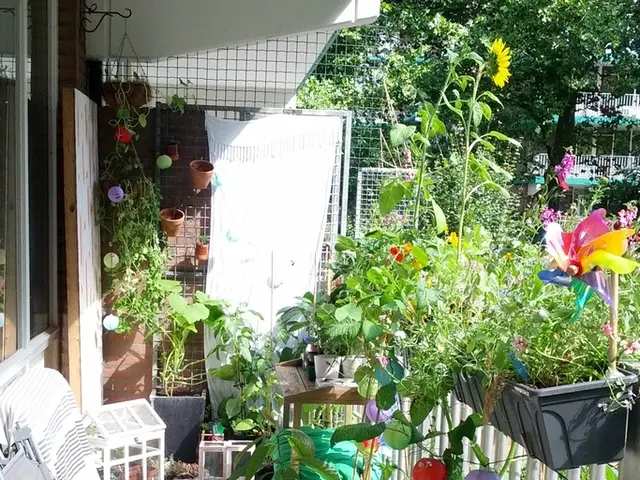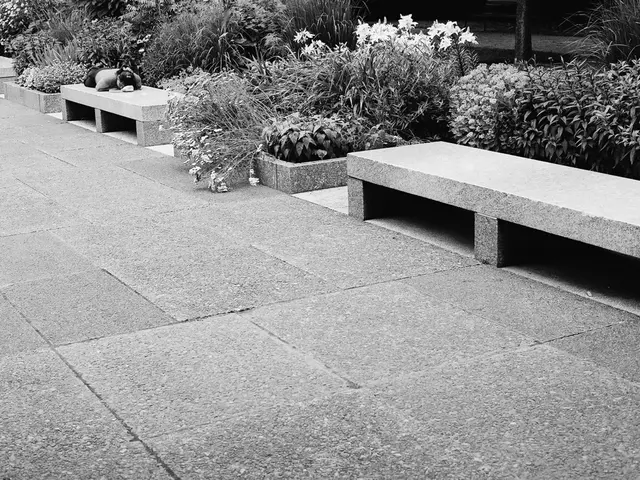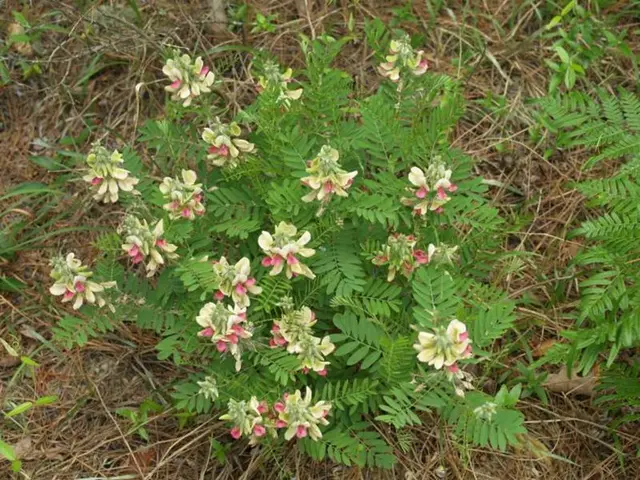Detailed Insight into the Process of Dehydrating Solid Wood Planks
Hardwood lumber drying is a critical process that significantly impacts the quality, durability, and usability of the final product. Three primary methods are commonly used: air drying, kiln drying, and hybrid systems.
### Air Drying
Air drying is a traditional method that involves stacking lumber in a controlled environment to facilitate natural air circulation, aiding in the drying process. This method generally takes longer, with drying times ranging from 6 to 24 months, depending on the species and environmental conditions [1][5]. The energy consumption is low, as it relies on natural processes. However, the potential for defects is higher, with a risk of warping and checking due to uneven drying. Proper stacking techniques can help minimize these issues.
### Kiln Drying
Kiln drying utilizes controlled heat and humidity in a kiln to speed up the drying process. This method offers much faster drying times, often completed in weeks or a few months, depending on the kiln settings and starting moisture content [3][5]. However, it requires significant electrical or fuel energy to operate the kiln, leading to higher energy consumption [3]. Improper settings can lead to issues like case-hardening or honeycombing [2][3].
### Hybrid Systems
Hybrid systems combine air drying with kiln drying to leverage the benefits of both methods. For example, starting with air drying and finishing in a kiln. This approach offers a balance between drying time, energy consumption, and minimizing defects.
## Comparison Summary
| **Drying Method** | **Drying Time** | **Energy Consumption** | **Potential for Defects** | |----------------------|----------------------------------------|------------------------|------------------------------------| | **Air Drying** | Long (6-24 months) | Low | Higher risk of warping and checking | | **Kiln Drying** | Short (weeks to months) | High | Risk of case-hardening, honeycombing | | **Hybrid Systems** | Moderate (shorter than air drying) | Moderate | Balances defect risk and speed |
Each method has its advantages and is chosen based on the type of wood, desired drying time, budget considerations, and the need to minimize defects. Stacks of dried lumber may be covered with a mesh-like, breathable material to lessen the occurrence of outside sources of deterioration. Stacked rows of lumber for air drying should be at least 12 inches away from the soil and 4.5 feet apart.
[1] Pre-dryers for hard-to-dry species and reducing energy consumption in dry kilns. [2] Proper drying benefits, including lighter weight, increased strength, better gluing, and reduced chance for deterioration. [3] A pre-dryer is a large building equipped with steam heat, several fans, and vents to maintain ideal air drying conditions year-round. [4] Oven dry weight (OD) is the weight of a wood sample that has been dried to a constant weight in a drying oven at 215°F. [5] Two or three months of air drying followed by several days in a steam heated kiln has been the traditional procedure for wood product manufacturers.
- In home-and-garden projects, natural resources like hardwood lumber can be dried using traditional methods such as air drying, which involves stacking lumber away from soil for several months, optimizing natural air circulation to facilitate the drying process.
- Advancements in technology and data-and-cloud-computing have played a significant role in modernizing home-and-garden practices, as seen in the implementation of software for monitoring and optimizing the drying process, such as predicting the optimal moisture level for various species of wood.
- When it comes to soil management in home-and-garden settings, proper stacking techniques, which are crucial in air drying, can be adapted to reduce erosion, minimize soil compaction and promote healthy plant growth, contributing to a sustainable lifestyle.




